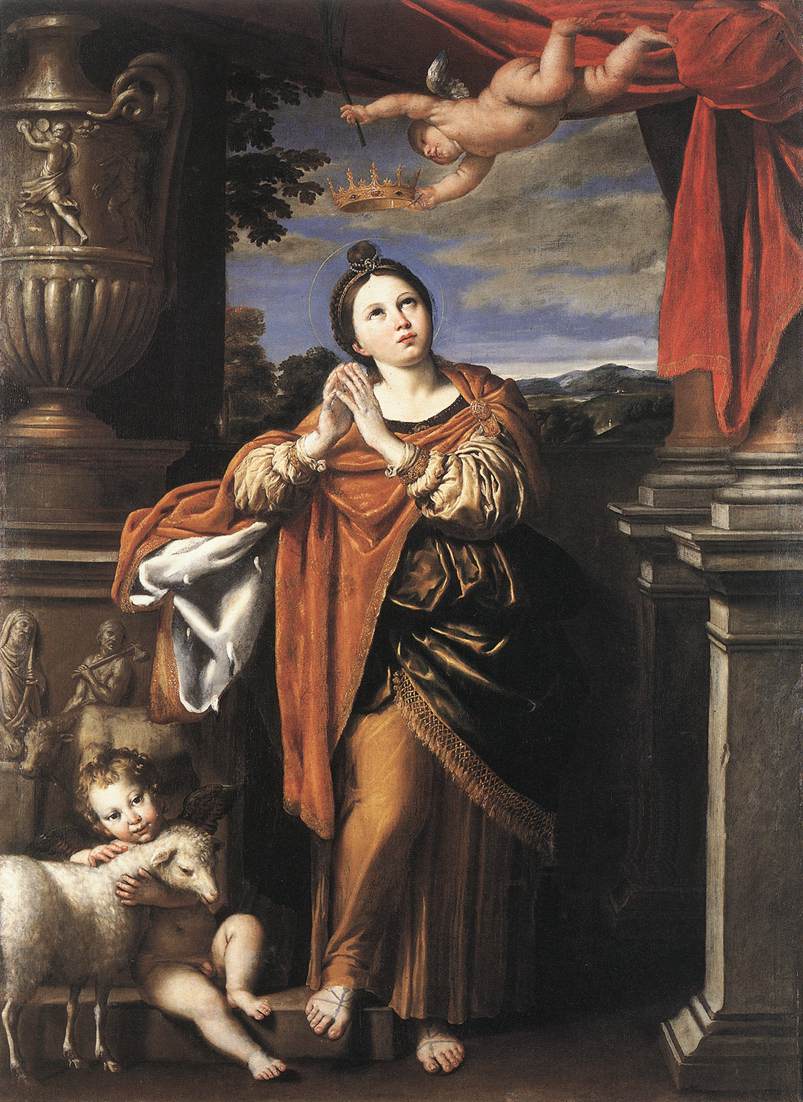 KV writes: “Recently a fellow Catholic told me about a ritual on the Eve of St. Agnes – fast all day and then at night the fasting woman will dream of her future husband. This sounds strange and superstitious to me. I could not find information on this from a credible Catholic source. Have you heard anything about this?”
KV writes: “Recently a fellow Catholic told me about a ritual on the Eve of St. Agnes – fast all day and then at night the fasting woman will dream of her future husband. This sounds strange and superstitious to me. I could not find information on this from a credible Catholic source. Have you heard anything about this?”
This ritual is a perfect example of how easy it is to turn devotion to a saint into a superstition which Catholics have been doing for centuries (i.e. burying a St. Joseph statue to sell a house, putting a statue of Our Lady in the window for good weather, etc.).
In this particular case, young women who wish to marry say a prayer and perform a series of rituals before going to bed on the eve of the feastday of St. Agnes, the teenaged martyr who died for Christ in 304 AD, with the promise that they would see their future husband in a dream.
This UK site describes some of the rituals demanded of the women which include “transferring pins one by one from a pincushion to a sleeve whilst reciting the Lord’s Prayer, walking backwards upstairs to bed or fasting all day. Another tradition was to eat a portion of dumb cake (a salty confection prepared with friends in total silence) before retiring to bed, hoping to dream of a future love: “St Agnes, that’s to lovers kind / Come ease the trouble of my mind.”
In Scotland, girls would meet in a field of crops at midnight, throw grain on the soil and pray:
‘Agnes sweet and Agnes fair,
Hither, hither, now repair;
Bonny Agnes, let me see
The lad who is to marry me.’
Catholic Match describes similar customs which start off with the simple advice of fasting for the day, but then proceed to go off the rails with a peculiar ritual before the girl goes to sleep.
“That night, they would take a sprig of rosemary and a sprig of thyme and sprinkle them with Holy Water. They would then put one sprig in a shoe and place it on one side of the bed, then do the same with another sprig on the other side. Before falling asleep they would pray, “Saint Agnes, that’s to lovers kind, come ease the trouble of my mind, let me my future husband view, and be my vision chaste and true.” They would then in their dream see their future husband, who would either give them a kiss or give them a cup of water.”
As they state, these rituals were immortalized in a poem by John Keats:
They told her how, upon St. Agnes’ Eve,
Young virgins might have visions of delight,
And soft adorings from their loves receive
Upon the honey’d middle of the night,
If ceremonies due they did aright;
As, supperless to bed they must retire,
And couch supine their beauties, lily white;
Nor look behind, nor sideways, but require
Of Heaven with upward eyes for all that they desire.
As romantic and prayerful as these rituals might seem, they are nothing more than superstition hiding under the cloak of Christian devotion. St. Agnes, who is considered to be the patron saint of young girls, went to her death at the tender age of 13 after refusing to renounce Christ, would never approve of participating in any ritual that would offend God. In fact, as she was going to her death, she refused to listen to those who begged her to save herself. “I would not offend my Spouse if I were to try to please you. He chose me first and he shall have me.”
Superstition offends God because it affects the worship we offer to the true God because it means we are “attributing an importance in some way magical to certain practices otherwise lawful or necessary,” the Catechism teaches in No. 2111. “To attribute the efficacy of prayers or of sacramental signs to their mere external performance, apart fromteh interior dispositions that they demand, is to fall into superstition.”
In other words, St. Agnes would be far more likely to answer a girl’s prayer for a good and chaste husband if she simply prays for her intercession for this cause rather than expect the saint to be an accomplice to a superstitious practice.
© All Rights Reserved, Living His Life Abundantly®/Women of Grace® http://www.womenofgrace.com









